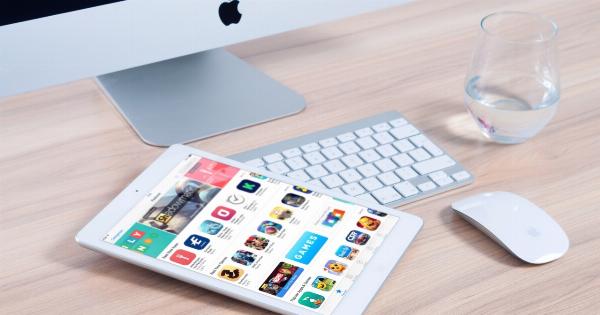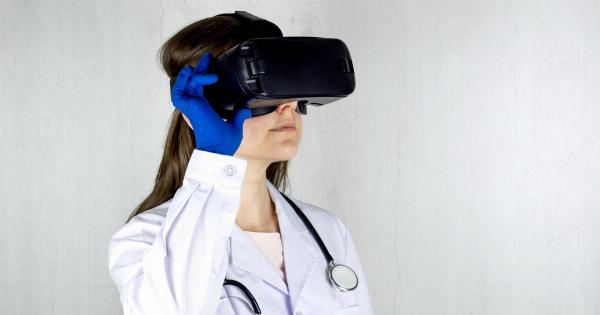For centuries, the stethoscope has been an essential tool in the field of medicine. The invention of this device by René Laennec revolutionized the way doctors could diagnose and listen to a patient’s internal sounds.
However, with the advancements in technology, the traditional stethoscope has faced challenges to keep up. In recent years, electronic stethoscopes have emerged as a modern alternative, offering enhanced features and capabilities. Now, imagine having an electronic stethoscope right on your smartphone.
This innovation could potentially change the way doctors and healthcare professionals perform auscultation.
What is an Electronic Stethoscope?
An electronic stethoscope, also known as a digital stethoscope, is a device equipped with modern technology that amplifies and filters the sounds of the body.
Unlike the traditional stethoscope that relies on the user’s ability to interpret the sounds through their ears, an electronic stethoscope converts the sounds into electrical signals. These signals can then be transmitted wirelessly to a receiving device, such as a smartphone, where the sounds can be visualized and analyzed.
Advantages of an Electronic Stethoscope
Electronic stethoscopes offer several advantages over their traditional counterparts:.
1. Amplification and Filtering
Electronic stethoscopes can amplify and filter the sounds of the body, enhancing the ability to distinguish between different frequencies and subtle nuances.
This feature enables doctors to hear sounds more clearly, even in noisy environments, improving diagnostic accuracy.
2. Recording and Playback
One of the significant advantages of electronic stethoscopes is the ability to record auscultation sounds.
This feature allows doctors to store and review the recordings later, ensuring accurate diagnosis and eliminating the possibility of missing crucial information during examination. Additionally, recordings can be shared with other healthcare professionals for consultations or educational purposes.
3. Visualization and Analysis
By connecting an electronic stethoscope to a smartphone, the recorded sounds can be visualized and analyzed using dedicated applications.
These applications often provide visualization tools such as phonocardiograms or spectrograms, allowing for a closer examination of the sound patterns and abnormalities. Furthermore, advanced algorithms may aid in the automatic identification of specific conditions, providing doctors with valuable insights.
4. Telemedicine and Remote Patient Monitoring
The integration of electronic stethoscopes with smartphones also opens up possibilities for telemedicine and remote patient monitoring.
With the ability to transmit auscultation sounds wirelessly, doctors can remotely listen to their patients’ heart and lung sounds in real-time. This feature is especially invaluable for patients in remote areas or those requiring frequent monitoring, as it eliminates the need for frequent physical visits.
5. User-Friendly Interface
With electronic stethoscopes integrated into smartphones, the user interface becomes more intuitive and user-friendly.
Doctors who are already familiar with smartphone operations can easily adapt to using the stethoscope application, minimizing the learning curve typically associated with a new device.
Limitations and Challenges
While electronic stethoscopes bring numerous advantages, they also come with their limitations and challenges:.
1. Cost
Electronic stethoscopes tend to be more expensive than traditional stethoscopes, which can make them less accessible to healthcare professionals, particularly in resource-limited settings.
However, as technology advances and becomes more widely adopted, the cost may decrease, making electronic stethoscopes more affordable in the future.
2. Dependency on Technology
Electronic stethoscopes rely on technology, including wireless connectivity and smartphone applications. If any of these components fail, the device may become unusable.
Additionally, healthcare professionals need to ensure the availability of reliable mobile networks or Wi-Fi connections for seamless transmission of the auscultation sounds.
3. Potential Interference
The use of electronic stethoscopes in noisy environments or areas with electromagnetic interference can lead to distorted sound quality.
Interference from electronic devices or machinery could degrade the accuracy of the auscultation, potentially affecting the diagnosis.
4. Learning Curve
Although electronic stethoscopes aim to provide a user-friendly interface, some healthcare professionals may still face a learning curve when transitioning from traditional stethoscopes.
Familiarizing oneself with the smartphone application and understanding the additional features may require some time and training.
The Future of Electronic Stethoscopes on Smartphones
The integration of electronic stethoscopes on smartphones has the potential to revolutionize healthcare practices. With continuous advancements in technology, these devices will likely become more affordable, portable, and versatile.
The use of artificial intelligence and machine learning algorithms holds promise for automating the identification of specific conditions, empowering healthcare professionals with quicker and more accurate diagnoses.
Furthermore, the combination of electronic stethoscopes with other emerging technologies, such as telemedicine and wearable devices, could enable comprehensive remote patient monitoring and seamless healthcare delivery.
Conclusion
Electronic stethoscopes integrated with smartphones offer an innovative approach to auscultation, providing enhanced amplification, filtering, visualization, and analysis of body sounds.
While they have their limitations and challenges, the potential benefits outweigh the drawbacks. As technology continues to evolve, electronic stethoscopes on smartphones have the potential to transform the way healthcare professionals interact with their patients and diagnose various conditions.




























